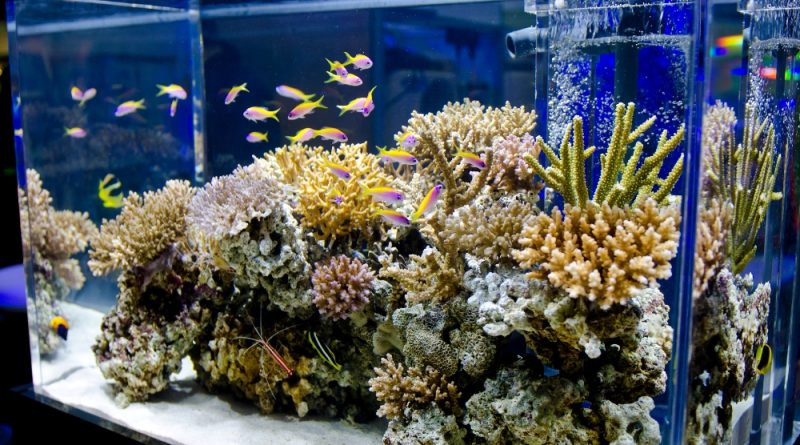Aquarium Keeping – A Comprehensive Guide to Setting Up and Maintaining Your Aquarium
Everything about the aquarium universe
Aquarium keeping is a fascinating hobby that allows you to create a unique aquatic world and appreciate the beauty and diversity of fish.
Setting up and maintaining an aquarium requires care, knowledge, and dedication, but the results can be extremely rewarding.
In this comprehensive guide, we will explore all aspects involved in aquarium keeping, from choosing the aquarium and fish to properly maintaining the aquatic environment.
Choosing the aquarium:
The first step in setting up an aquarium is choosing the appropriate size and type. Aquariums come in different sizes and shapes, from small tabletop tanks to large wall-mounted aquariums.
It’s important to consider the available space in your home and the type of fish you want to keep. Additionally, you need to acquire a suitable filtration system, a thermostat to control water temperature, and adequate lighting.
Aquarium cycling:
Before adding fish to the aquarium, it’s essential to go through the cycling process. This involves establishing a colony of beneficial bacteria that help break down fish waste and maintain water quality.
To cycle the aquarium, add a source of ammonia (such as fish food) and monitor levels of ammonia, nitrite, and nitrate until they stabilize at safe levels for the fish.
Choosing the fish:
When choosing fish for your aquarium, it’s important to consider their size, temperament, and water requirements.
Research the species you are interested in and ensure they are compatible with each other.
Also, check if they are suitable for the size of your aquarium and if they require specific water conditions, such as temperature and pH. Avoid mixing aggressive fish with more peaceful species.
Introducing fish to the aquarium:
Once your aquarium is cycled, and the fish are chosen, it’s time to introduce them to the environment. It’s advisable to acclimate the fish gradually to the aquarium’s water temperature.
To do this, place the transport bag inside the aquarium for about 15 minutes to equalize temperatures.
Then, carefully release the fish into the aquarium, avoiding thermal shock or damage to the fins.
Feeding the fish:
Fish need to be regularly fed with a balanced diet. Different types of food are available, including flakes, pellets, live, and frozen foods.
It’s important to feed the fish in appropriate amounts and avoid overfeeding. Observe how the fish respond to the feeding and adjust the quantity as needed.
Aquarium maintenance:
Maintaining water quality is essential for the well-being of the fish. This involves regular aquarium maintenance tasks such as cleaning the filter, partial water changes, and water quality testing.
Filter cleaning should be done according to the manufacturer’s instructions, removing debris and rinsing filter media.
Partial water changes are important to remove accumulated toxic substances and keep the water clean and healthy for the fish.
It is recommended to change 10% to 20% of the water every week or every two weeks, depending on the aquarium’s needs.
Additionally, regularly testing water parameters such as pH, ammonia, nitrite, and nitrate is crucial to ensure they are within safe levels for the fish.
Test kits are available on the market that provides accurate results. If necessary, adjust water parameters using appropriate conditioners and chemicals.
Aquarium decoration:
Aquarium decoration plays a significant role in both aesthetics and fish well-being.
Add aquatic plants, rocks, driftwood, and other elements that provide shelter, hiding spots, and resting areas for the fish.
Furthermore, decoration can help create shaded areas, reduce stress, and establish a more natural environment for the fish.
Observation and care for the fish:
Pay attention to the behavior and health of the fish. Observe if they are swimming normally, feeding properly, and not showing signs of illness, such as loss of appetite, changes in color, or abnormal behavior.
In case of health issues, consult an aquarium specialist or a fish veterinarian.
Continuous education:
Aquarium keeping is an ever-evolving hobby, and it’s essential to stay updated on best practices and new discoveries in the field.
Participate in online forums, discussion groups, and aquarium-related events to share experiences and learn from other aquarium enthusiasts.
Additionally, there is a wide range of books and resources available that can provide valuable information on different fish species, aquarium techniques, and more.
Conclusion:
Setting up and maintaining a fish aquarium requires patience, dedication, and continuous learning. With proper care, your aquarium can become a beautiful and vibrant ecosystem that provides hours of enjoyment and relaxation.
Remember that the health and well-being of the fish should be the top priority, and a well-maintained aquarium can bring lasting joy and satisfaction.
Liked our article “Aquarium Keeping – A Comprehensive Guide to Setting Up and Maintaining Your Aquarium”? Then don’t forget to comment on the post and share with your contacts who are interested in setting up their aquarium; this information will be very helpful. Enjoy the tips and happy reading!




